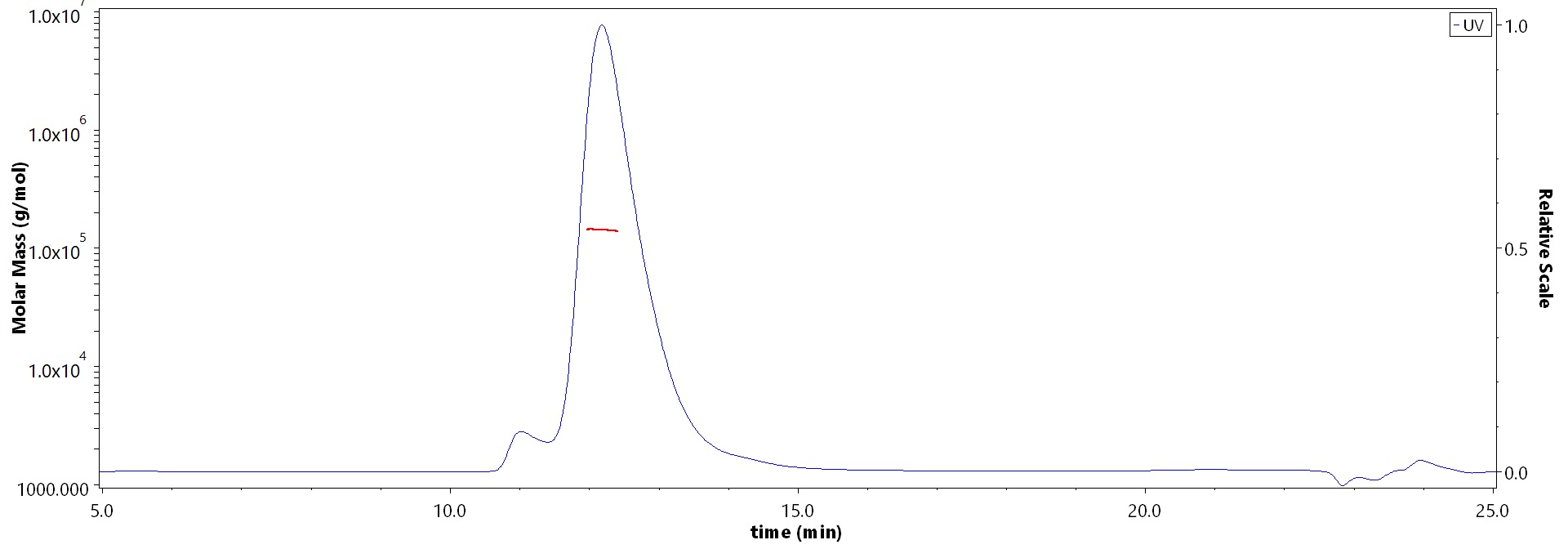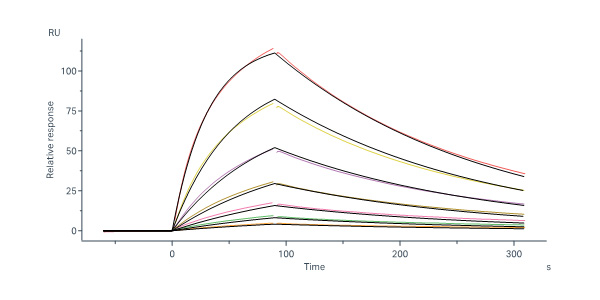Effect of FLT3 ligand on the gene expression of TIM-3, HIF1-α, and TNF-α in an acute myeloid leukemia cell lineHeidari, Kazemi-Sefat, Feizollahi
et alMol Biol Rep (2025) 52 (1), 313
Abstract: Acute Myeloid Leukemia (AML) pathogenesis is driven by the dysregulation of various cell signaling pathways, including the FMS-Like Tyrosine Kinase 3 (FLT3) pathway and its ligand (FLT3L). These pathways play a critical role in promoting cell survival, proliferation, and resistance to apoptosis, contributing to leukemogenesis. In this study, we investigated the effects of FLT3L on the expression of key genes associated with immune regulation, hypoxia, and inflammation-TIM-3, HIF-1α, and TNF-α-in the THP-1 cell line, a well-established model for AML research.THP-1 cells were cultured under standard conditions and treated with varying concentrations of FLT3L, alongside PMA as a positive control. Quantitative RT-PCR was employed to measure the expression levels of TIM-3, HIF-1α, and TNF-α genes after 48 h of treatment.Our findings demonstrated that specific concentrations of FLT3L significantly upregulated the expression of TIM-3, HIF-1α, and TNF-α in THP-1 cells. This suggests that FLT3L not only influences cell proliferation and survival but also modulates pathways related to immune evasion, hypoxia adaptation, and inflammatory responses, which are hallmarks of leukemia progression.These results highlight the pivotal role of FLT3L in regulating the expression of genes associated with AML pathogenesis, particularly those involved in hypoxia (HIF-1α), immune checkpoint regulation (TIM-3), and inflammation (TNF-α). The findings underscore the potential of targeting the FLT3 pathway as a therapeutic strategy in AML. Further studies are warranted to elucidate the underlying molecular mechanisms and explore their clinical implications for improving patient outcomes.© 2025. The Author(s), under exclusive licence to Springer Nature B.V.
In vitro differentiation of common lymphoid progenitor cells into B cell using stromal cell free culture systemYang, Chen, Wen
et alBMC Immunol (2025) 26 (1), 12
Abstract: The OP9 culture system is an important in vitro model for B cell development. However, the complex nature of operations and the intrinsic variability of stromal cell functionality, which can be influenced by factors such as radiation exposure or contamination, pose considerable challenges to their wider application. Currently, there exists a paucity of studies documenting in vitro B cell differentiation culture systems that exclude stromal cells, and the experimental methodologies available for reference remain limited. This report elucidates a robust stromal cell-free culture system. Specifically, bovine serum albumin (BSA) or fetal bovine serum (FBS), in conjunction with interleukin-7 (IL-7), Flt3 ligand (Flt3L), and stem cell factor (SCF), were incorporated into X-VIVO15 medium. This system proficiently facilitates the directed differentiation of common lymphoid progenitor cells (CLP), defined as lineage-CD127 + CD117lowsca-1lowCD135+, into B lymphocytes in vitro, achieving an amplification factor of up to one hundredfold.We examined the roles of IL-7, Flt3L and SCF in differentiation of B cells from CLP in this culture system. Our findings indicate that IL-7 is a pivotal cytokine essential for B cell differentiation in vitro, demonstrating a notable synergistic impact when combined with SCF and FLT3L. Moreover, this system is capable of supporting the differentiation of hematopoietic stem cells (HSCs) and lymphoid-primed multipotent progenitor cells (LMPPs) into B cells in vitro. The findings substantiated the efficacy of the culture system in investigating the in vitro differentiation of bone marrow-derived progenitor cells into B cells and elucidated the specific roles of BSA, FBS and three cytokines (IL-7, FLT3L and SCF) in promoting efficient B lineage differentiation.© 2025. The Author(s).
A single point mutation on FLT3L-Fc protein increases the risk of immunogenicityQin, Phung, Wu
et alFront Immunol (2025) 16, 1519452
Abstract: As a crucial asset for human health and modern medicine, an increasing number of biotherapeutics are entering the clinic. However, due to their complexity, these drugs have a higher potential to be immunogenic, leading to the generation of anti-drug antibodies (ADAs). Clinically significant ADAs have an impact on pharmacokinetics (PK), pharmacodynamics (PD), effectiveness, and/or safety. Thus, it is crucial to understand, manage and minimize the immunogenicity potential during drug development, ideally starting from the molecule design stage.In this study, we utilized various immunogenicity risk assessment methods, including in silico prediction, dendritic cell internalization, MHC-associated peptide proteomics, in vitro HLA peptide binding, and in vitro T cell proliferation, to assess the immunogenicity risk of FLT3L-Fc variants.We identified a single point mutation in the human FLT3L-Fc protein that introduced highly immunogenic T cell epitopes, leading to the induction of T cell responses and thereby increasing the immunogenicity risk in clinical settings. Consequently, the variant with this point mutation was removed from further consideration as a clinical candidate.This finding underscores the necessity for careful evaluation of mutations during the engineering of protein therapeutics. The integration of multiple immunogenicity risk assessment tools offers critical insights for informed decision-making in candidate sequence design and therapeutic lead selection.Copyright © 2025 Qin, Phung, Wu, Yin, Tam, Tran, ElSohly, Gober, Hu, Zhou, Cohen, He, Bainbridge, Kemball, Zarzar, Sreedhara, Stephens, Decalf, Moussion, Ye, Balazs and Li.
Hyperbaric oxygen potentiates platelet-rich plasma composition and accelerates bone healingChang, Huang, Chen
et alJ Orthop Translat (2025) 51, 1-12
Abstract: This study aimed to investigate whether platelet-rich plasma (PRP) obtained from the blood of rats preconditioned with hyperbaric oxygen (HBOP) would enhance the biological activity of PRP and accelerate the healing process of femur fractures in a rat model.PRP was derived from blood samples of healthy rats subjected to either hyperbaric oxygen (hPRP) or normobaric air (nPRP). A closed femur fracture model was established in male Wistar rats, with treatments of hPRP or nPRP administered around the fracture site immediately post-fracture and on days 7, 14, 21, and 28. Growth factor concentrations in hPRP and nPRP were biochemically quantified. Bone healing was assessed weekly by X-ray, while histological and immunofluorescence analyses evaluated inflammatory status, osteoprotegerin (OPG), receptor activator of nuclear factor kappa-B ligand (RANKL) expression, and the presence of osteoblasts, osteoclasts, and osteocytes during healing. The effects of hPRP and nPRP on MC3T3-E1 preosteoblast migration and proliferation were also tested in vitro.hPRP showed significantly higher concentrations of growth factors such as activin-A, brain-derived neurotrophic factor, nerve growth factor, Flt-3 Ligand, granulocyte-macrophage colony-stimulating factor, hepatocyte growth factor, and platelet-derived growth factor, compared to nPRP. In vitro, hPRP demonstrated more significant effects on preosteoblast migration and proliferation. In vivo, hPRP treatment resulted in enhanced bone healing, higher OPG levels in osteoblasts and osteoclasts, and an elevated OPG/RANKL ratio compared to nPRP.HBOP enhances the biological activity of PRP and accelerates bone healing in a closed femur fracture model in rats. This study highlights the regenerative potential of PRP when preconditioned with hyperbaric oxygen for use in bone fracture therapy.PRP is widely used in treating bone defects and fractures, but its enhancement through HBOP remains underexplored. Our findings demonstrate that HBOP potentiates the biological activity of PRP, offering promising therapeutic potential for bone fracture healing.Enriching growth factors in PRP through HBOP could significantly improve tissue regeneration, especially in bone healing. The potential of hPRP in clinical applications is highly promising, particularly in orthopaedic surgery, trauma care, sports medicine, and managing bone healing in compromised patients.© 2024 The Authors.




























































 膜杰作
膜杰作 Star Staining
Star Staining
















